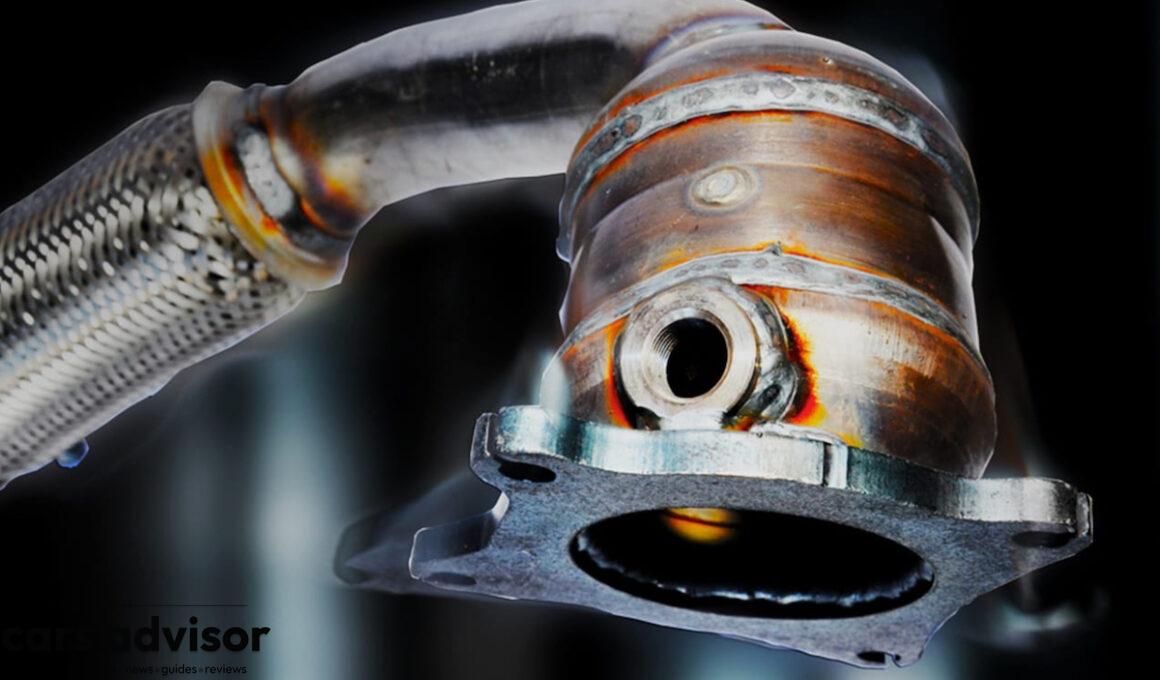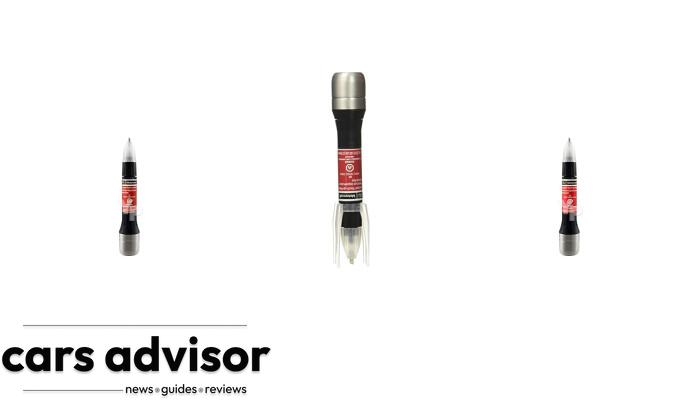Driving without a catalytic converter may have crossed your mind as a quick solution to various car troubles, but did you know the potential consequences attached to that decision?
In this blog post, we’ll dive into the role of catalytic converters in modern vehicles, discuss whether it’s feasible and legal to drive without one and explore alternative solutions for when you face issues with your converter. Read on to ensure that you’re making informed decisions about your vehicle’s maintenance and staying on the right side of the law.
TLDR
1. It is technically possible to drive a car without a catalytic converter, but it is not a sustainable long-term option.
2. Driving without a catalytic converter can lead to reduced fuel mileage and cause other issues.
3. People often remove catalytic converters, but it is dangerous and illegal to drive without one.
4. If a catalytic converter is stolen, it is possible to drive without it, but it is not a long-term solution.
5. It is illegal and unsafe to drive without a catalytic converter in many states, including California and Texas.
6. The loudness of a car without a catalytic converter can be significantly higher.
7. One of the signs of a stolen catalytic converter is a loud and rattling sound coming from the exhaust.
Understanding Catalytic Converters And Their Significance In Vehicles
Catalytic converters are an essential component of modern cars that reduce harmful emissions, comply with environmental regulations, and improve air quality.
Reduction Of Harmful Emissions
Catalytic converters play a crucial role in reducing harmful emissions produced by vehicles. These essential components are designed to convert toxic pollutants and gases, such as carbon monoxide, nitrogen oxides, and hydrocarbons, into less harmful substances like carbon dioxide and water vapor. The process is made possible through a chemical reaction facilitated by the precious metals – platinum, palladium, and rhodium – that coat the honeycomb-like structure inside the converter.
By effectively minimizing these hazardous emissions from your vehicle’s exhaust system, catalytic converters contribute significantly to improving air quality and protecting public health. For instance, since their implementation in 1975 in response to the Clean Air Act requirements in the United States, they have been highly successful at decreasing smog levels across major cities.
As engines continue to evolve towards better efficiency and lesser environmental impact with advanced technologies like Exhaust Gas Recirculation (EGR) systems or Diesel Particulate Filters (DPF), it becomes increasingly important not to overlook or undermine the value of having a well-maintained catalytic converter on your car for both legal compliance and ecological preservation purposes.
Compliance With Environmental Regulations
Catalytic converters are an essential component of your vehicle’s exhaust system, and one of their primary functions is to reduce harmful emissions. This reduction in pollution helps vehicles comply with environmental regulations that have been put in place to protect the environment and improve air quality.
Without a functioning catalytic converter, your car would release significant amounts of harmful gases into the atmosphere, which could cause serious harm. In addition to violating environmental regulations, driving without a catalytic converter can also result in fines and legal troubles.
Furthermore, modern cars come equipped with catalytic converters as part of emission control systems designed to limit carbon emissions from your engine. These emissions can contribute significantly to pollution and global warming; thus every driver needs to play their role in mitigating this problem by ensuring that their vehicle meets all relevant standards for fuel efficiency or carbon footprints.
Bear in mind that failing an emissions test because of a malfunctioning or missing catalytic converter could lead to costly repairs or even disqualification from using certain roads until you fix the issue appropriately.
Bottom line: replacing a damaged or stolen converter as soon as possible should be on top of your priority list if you want to avoid legal issues while protecting both yourself and the environment from harm caused by inefficient engines.
Improved Air Quality
One of the main functions of a catalytic converter is to reduce harmful emissions that are released from a car’s exhaust system. These emissions can have significant negative effects on air quality, especially in densely populated areas. By preventing harmful gases like carbon monoxide and nitrogen oxides from being released into the environment, catalytic converters help to improve the overall health of our planet.
Without a functioning catalytic converter, cars release significantly more pollutants into the air we breathe. This not only contributes to poor air quality but also has an impact on public health. Studies have shown that exposure to vehicle emissions can lead to respiratory problems such as asthma and lung cancer. For this reason alone, it is important to maintain your car’s emission control system and ensure that your catalytic converter is operating properly.
By keeping your car’s engine running efficiently with a functioning catalytic converter, you are doing your part in reducing pollution and improving air quality. It may seem like a small contribution, but every little bit helps in creating a healthier environment for us all.
Can You Drive Without A Catalytic Converter?
Driving without a catalytic converter is technically possible but not advisable due to legal implications, environmental impact, and decreased fuel efficiency.
Legal Implications And Fines
Driving without a catalytic converter can lead to legal troubles and fines in many states. This is because vehicle emissions are strictly regulated to ensure that they do not cause harm to the environment or human health. In California, for example, it is illegal to operate a car without a properly functioning catalytic converter. Penalties can range from $1,000 up to $10,000 depending on the severity of the offense.
Furthermore, some aftermarket parts suppliers may claim that their products can improve engine performance by removing the catalytic converter. However, tampering with emission control systems is also illegal under federal law and may result in hefty fines or even imprisonment. It’s always essential to follow your state’s regulations and guidelines regarding automobile modifications.
In summary, driving without a catalytic converter can be tempting due to its perceived benefits such as increased horsepower or fuel economy but it comes with significant legal implications and risks associated with non-compliance with environmental laws. You must keep your vehicle compliant at all times with proper maintenance of its emission control system components like the catalytic converters while seeking professional advice when necessary.
Environmental Impact
Driving without a catalytic converter can have severe consequences for the environment. Catalytic converters are essential components of modern cars, reducing the amount of harmful emissions released into the air. Without them, cars emit higher levels of carbon monoxide, nitrogen oxides, and other pollutants that contribute to air pollution and climate change. In particular, these toxic gases are known to cause respiratory problems in humans and animals.
Furthermore, driving without a catalytic converter goes against environmental regulations put in place to reduce pollution levels. The Environmental Protection Agency (EPA) mandates that all vehicles manufactured after 1975 must have a functioning catalytic converter at all times. Failing to abide by these rules can result in hefty fines and legal troubles for owners caught breaking the law.
Overall, it is important to prioritize environmentally-sustainable practices when it comes to vehicle maintenance. If you suspect your car’s catalytic converter has been removed or stolen – get it replaced immediately not only avoiding any legal troubles but also doing your bit towards improving air quality and minimizing harm caused by pollution on our planet!
Decrease In Fuel Efficiency
Driving without a catalytic converter can negatively impact fuel efficiency, causing you to lose out on valuable gas mileage. Since the catalytic converter is responsible for converting harmful exhaust gases into less harmful ones before they are released into the environment, driving without one puts more strain on other parts of your engine. This effect ultimately leads to increased fuel consumption and decreased performance.
Studies have shown that driving without a properly functioning catalytic converter can reduce fuel efficiency by up to 20 percent. This decrease in fuel economy translates into higher costs at the pump, which can add up over time if not addressed quickly. Therefore, it is essential to maintain a functional catalytic converter as part of regular car maintenance and avoid any potential legal troubles or safety hazards associated with its removal or damage.
Overall, while it may be tempting to drive without a functioning catalytic converter for various reasons such as theft prevention or improved engine performance, doing so will lead to decreased fuel economy and costly repairs down the road. It’s important to prioritize environmental responsibility and take proactive measures regarding proper car maintenance rather than taking shortcuts that create further harm in the long run.
Risks And Consequences Of Driving Without A Catalytic Converter
Driving without a catalytic converter can result in increased harmful emissions, potential legal troubles, and compromised safety due to the risk of fires or explosions caused by excessive heat buildup.
Increased Harmful Emissions
Driving without a catalytic converter can have serious consequences on the environment. Without this essential part, harmful emissions from your car’s engine can be released into the air. This includes carbon monoxide, hydrocarbons, and nitrogen oxides which are all known to contribute to pollution and health issues such as respiratory problems. In fact, according to the Environmental Protection Agency (EPA), a car without a functioning catalytic converter produces about 20 times more pollutants than one with it.
These increased emissions not only harm the environment but also put us at risk of exceeding federal and state emission regulations. Depending on where you live, driving without a catalytic converter could result in fines or even having your driver’s license suspended. Furthermore, faulty emission systems can trigger warning lights on your vehicle dashboard that will require an expensive repair bill from an authorized mechanic to fix – this could be prevented by maintaining or repairing your existing catalytic converter.
Drivers must understand that we all share responsibility for keeping our planet clean by taking care of our cars’ environmental performance. Whether it’s getting regular tune-ups, ensuring proper maintenance of their cars’ exhaust system parts like oxygen sensors and spark plugs or investing in eco-friendly technologies like electric vehicles – there are many things we can do as responsible owners of automobiles to reduce our contribution to air pollution while protecting our cherished rides at the same time!
Potential Legal Troubles
Driving without a catalytic converter is not only risky for the environment, but it can also lead to potential legal troubles. In many US states, it is illegal to drive without a functioning catalytic converter due to federal and state emissions regulations. Offenders can face heavy fines or even have their car impounded for non-compliance.
Furthermore, removing or tampering with a catalytic converter is considered a criminal offense in some areas. For instance, California has strict laws against driving vehicles that do not meet emission standards set by the Air Resources Board (ARB). A violation of these laws could result in fines ranging from $500 up to $2500 per violation. Hence, it’s best to maintain a functioning catalytic converter in compliance with legal requirements.
In conclusion, ignoring the importance of having an operable catalytic converter while driving exposes you to various risks such as environmental damage and legal disputes. Moreover, proper maintenance and monitoring of your vehicle’s exhaust system play an essential role in keeping both you and the environment safe from harmful emissions resulting from driving without a functional catalytic converter.
Compromised Safety
Driving without a catalytic converter can compromise the safety of your vehicle. If you remove the catalytic converter, you are essentially tampering with your car’s exhaust system and altering its original design. This modification can cause an increase in engine heat and potentially damage the engine or other car parts over time.
Moreover, driving without a catalytic converter exposes you to increased levels of harmful gas emissions, which can be harmful to both driver and passengers’ health. In addition, illegal modifications like removing a catalytic converter could void your insurance policy if something were to go wrong while driving. It is essential to maintain all of your vehicle’s emission control systems for safe driving.
If you suspect that someone may have stolen your catalytic converter or it is damaged, do not drive without it for long periods as this compromises both legal compliance and safety on the road. Ultimately, compromising your car’s function by operating without a proper functioning exhaust or emission control system will lead to unsafe driving conditions with potential legal consequences.
Alternatives And Solutions For A Non-functioning Catalytic Converter
If you have a non-functioning catalytic converter, some alternatives and solutions include replacing the damaged or stolen converter, seeking professional advice, exploring eco-friendly alternatives to high-performance modifications, and taking measures to prevent theft.
Replacing The Damaged Or Stolen Converter
If your catalytic converter has been stolen or damaged, it is essential to replace it to maintain a functioning exhaust system and comply with legal requirements. Here are some options for replacing a damaged or stolen converter:
- Buy a new catalytic converter: This is the easiest option but can be expensive, depending on your car’s make and model.
- Purchase an aftermarket catalytic converter: Aftermarket converters are cheaper than OEM parts, but not all of them meet emissions standards.
- Use a used catalytic converter: Buying second-hand parts can save money, but it carries some risks as you may not know its condition.
- Install a universal-fit catalytic converter: These converters fit most cars and are more affordable than OEM parts, but they may require modifications to fit correctly.
- Seek professional help: Consult your mechanic or auto parts dealer if you’re unsure which replacement option is best for your car.
Remember that any new or replacement converters should meet federal and state emissions regulations and standards to ensure compliance with the law. Finally, take measures to prevent theft by parking in secure areas, using anti-theft devices such as alarms or security cameras, etching identifying marks on the converter, or installing protective shields around the exhaust system.
Seeking Professional Advice
If you suspect that your catalytic converter has been stolen or is not functioning properly, seeking professional advice is strongly recommended. A trusted mechanic can diagnose the issue and suggest a suitable solution. They may recommend replacing the damaged or stolen converter with a new one, which will ensure that your car runs smoothly and meets environmental standards.
It’s also advisable to seek professional advice before making any modifications to your vehicle’s exhaust system. While high-performance modifications may seem appealing, they can compromise safety and harm the environment. An experienced auto mechanic can guide you on eco-friendly alternatives that maintain engine performance without sacrificing emission control systems like catalytic converters.
In summary, seeking professional advice should be an important part of maintaining your vehicle’s health while reducing harmful emissions from its exhaust system. Whether it’s for issues related to theft or damage, getting expert guidance helps keep you safe while promoting eco-friendly driving practices.
Eco-friendly Alternatives To High-performance Modifications
Instead of removing or sacrificing the catalytic converter for higher engine performance, there are several eco-friendly alternatives to consider. One option is to invest in a high-flow catalytic converter that offers better exhaust flow while still reducing harmful emissions. Another way to improve engine performance and reduce pollution is by installing an oxygen sensor spacer, which can increase airflow efficiency without compromising on exhaust output.
In addition, some car enthusiasts opt for biodiesel fuel instead of gasoline, as it produces fewer carbon emissions and can even increase fuel mileage. Hybrid electric conversions are also becoming popular among those who want to balance power with sustainable energy sources.
Ultimately, investing in these eco-friendly alternatives not only benefits the environment but also ensures compliance with state and federal regulations regarding vehicle emissions. Making responsible choices when it comes to high-performance modifications can make a positive impact on both your car’s function and the world around you.
Tips For Theft Prevention
Car owners can take the following steps to prevent catalytic converter theft:
- Park in well-lit and populated areas.
- Install a car alarm with a sensor for vibration or tilt.
- Engrave the vehicle identification number (VIN) on the catalytic converter.
- Install a cage or shield around the converter to make it more difficult to access.
- Use tamper-resistant bolts and nuts instead of standard ones.
- Consider purchasing a security system designed specifically for catalytic converter protection.
- Partner with neighbors and create a neighborhood watch program for suspicious activity.
- Be aware of common signs of stolen converters, such as loud engine noise, missing parts, or unexplained rattling sounds from the exhaust system.
- Register your catalytic converter with local law enforcement agencies, which can help track it down if it is stolen.
By taking these precautionary measures, car owners can significantly reduce their risk of falling victim to catalytic converter theft while also promoting eco-friendly practices by maintaining a functioning emissions control system in their vehicles.
Conclusion And Recommendations
In conclusion, driving without a catalytic converter has numerous risks and negative consequences. To ensure safe and legal driving while also promoting eco-friendly practices, it is important to maintain a functioning catalytic converter in your vehicle. We recommend taking measures to prevent theft of the converter and seeking professional advice for any repairs or replacements needed. For more information on the importance of emissions control systems in vehicles, as well as other car maintenance tips, be sure to read our blog regularly.
Importance Of Maintaining A Functioning Catalytic Converter
Maintaining a functioning catalytic converter is crucial for several reasons. Firstly, it helps to reduce the harmful emissions released by your car into the environment. A properly functioning catalytic converter can significantly decrease the levels of carbon monoxide and nitrogen oxides that are emitted from your vehicle’s exhaust pipe, helping to improve air quality and minimize pollution.
Secondly, keeping a catalytic converter in good working condition ensures compliance with environmental regulations and legal requirements. In many states across America, cars are required to pass smog checks that test their emissions output. Without a functioning catalytic converter, your car will likely fail these tests and you may face fines or even have your registration revoked.
Finally, maintaining a functioning catalytic converter can also help to improve fuel efficiency and engine performance. If your catalytic converter is not working correctly or has been removed entirely, it can cause other parts of your engine to wear out more quickly and lead to expensive repairs down the line.
In summary, maintaining a functional catalytic converter isn’t just important for reducing harmful emissions but also legal compliance and ensuring optimal fuel efficiency for modern cars while minimizing harm on our environment.
Legal Requirements And Consequences
It is illegal to drive without a catalytic converter in many states, and doing so can result in hefty fines. In California, the penalty for driving without a catalytic converter can be up to $10,000. Additionally, removing or tampering with your car’s emissions control system violates federal law and can lead to criminal charges.
But it’s not just legal trouble that you should worry about. Driving without a catalyst means releasing harmful pollutants into the air we breathe. This affects both our health and the environment around us. By driving illegally without a catalytic converter, you contribute to air pollution levels that cause respiratory problems like asthma and lung cancer, especially in urban areas where smog levels are already high.
It’s important to maintain your car’s emission control systems so you don’t put yourself at risk of financial penalties or harm the environment by increasing harmful emissions output caused by driving without a catalytic converter. Regular maintenance and inspections ensure that everything is functioning correctly within compliance frameworks set forth by regulatory bodies such as state environmental regulations (like CARB). Encourage others around you also practice eco-friendly solutions when addressing vehicle issues – this promotes safety on roads while reducing carbon footprints from motor vehicles!
Promoting Eco-friendly Practices And Reducing Harm To The Environment.
Promoting eco-friendly practices and reducing harm to the environment is crucial when it comes to vehicle maintenance. A functioning catalytic converter plays a significant role in reducing harmful emissions that contribute to air pollution and global warming. Maintaining a well-functioning exhaust system, including the catalytic converter, can help minimize the carbon footprint of your vehicle.
In addition to maintaining a functioning catalytic converter, there are other ways you can practice eco-friendly habits as a car owner. For instance, regularly servicing your car will ensure it’s running at optimum efficiency and reduce fuel consumption. Simple acts such as inflating tires correctly, removing unnecessary weight from the trunk of the car, and avoiding aggressive driving can also increase fuel economy and reduce harmful emissions into the environment.
Ultimately promoting eco-friendly practices goes beyond just maintaining our cars; we need to make an effort in our everyday lives towards sustainable living habits. This includes simple actions like recycling materials, using energy-efficient light bulbs or appliances at home and trying alternative modes of transportation like biking or walking whenever possible. All these small steps play an integral part in creating cleaner air for us all to breathe while reducing the environmental harm caused by greenhouse gas emissions from vehicles.






















